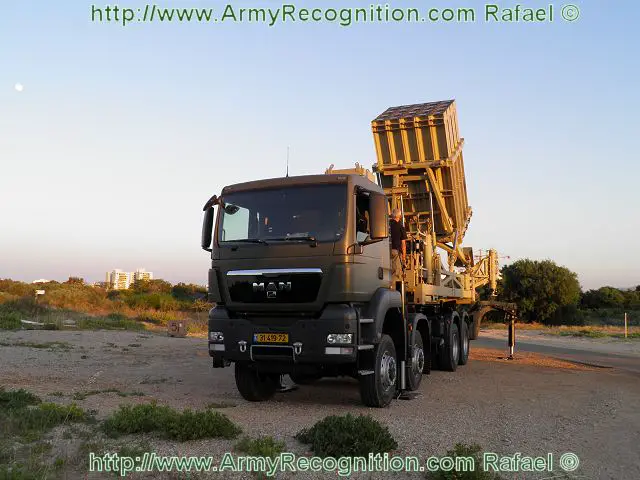| Palestinian
militants intermittently fire rockets from the Gaza Strip into Israel,
but strikes against Eilat, a desert resort that attracts hoards of Israeli
and European tourists during the summer, are rare.
In April, two rockets fired by militants operating in the neighboring
Sinai Peninsula exploded in open areas in Eilat. There were no reports
of injuries, but a few local residents were treated for shock.
The attack prompted the Israel Air Force (IAF), which operates Iron
Dome, to begin preparing a site for positioning the system,
in the event that militants increase their strikes.
"We are starting to think about how to defend Eilat if there is a
requirement to do so," a senior officer told The Jerusalem Post at
the time.
Several weeks ago, two 122 mm. Grad-type rockets fired from Sinai landed
in Ovda, a region located several dozen km north of Eilat, and near Mitzphe
Ramon, a town in the southern Negev desert.
No casualties or damage were reported in the attack, but defense officials
noted with concern that this was the first time that these areas were
targeted by rockets. Israeli intelligence agencies speculated that one
of several groups was behind the attack - including Gaza militants, al-Qaida
and Bedouin mercenaries.
Developed by the state-owned Israel Aerospace Industries, Iron
Dome is designed to intercept rockets at a range of 4 to
70 km. The system's radar calculates the trajectory of hostile projectiles
and instantaneously identifies those that do not pose a risk of hitting
a populated area.
Since becoming operational in March 2011, the system has intercepted some
90 percent of the rockets fired from Gaza at southern Israeli cities.
The U.S. Congress has recently approved a 680-million-U.S. dollar aid
package to Israel, to enable it to purchase more Iron Dome batteries.
The special funding was the highest ever appropriated for Israel's missile
defenses in a single year.
In addition to Iron
Dome, the army is weighing plans to deploy radars along the
Israel-Egypt border that would enable early detection of rocket attacks.
The radars are reportedly similar to those the IAF currently operates
along the volatile borders with Gaza and Lebanon, which transmit data
on incoming rockets to the army's Home Front Command.
|




















